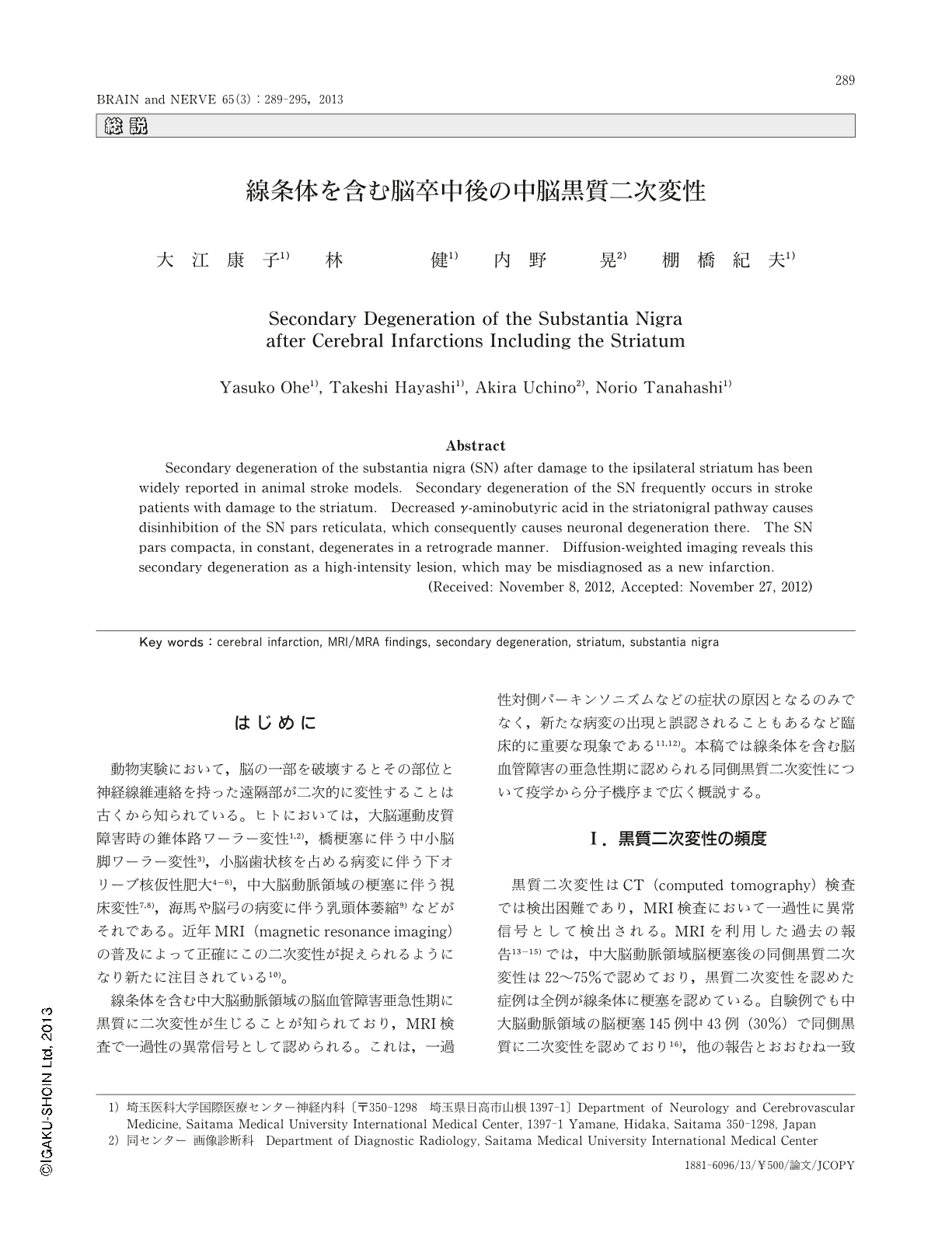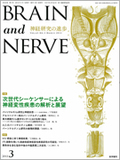Japanese
English
- 有料閲覧
- Abstract 文献概要
- 1ページ目 Look Inside
- 参考文献 Reference
はじめに
動物実験において,脳の一部を破壊するとその部位と神経線維連絡を持った遠隔部が二次的に変性することは古くから知られている。ヒトにおいては,大脳運動皮質障害時の錐体路ワーラー変性1,2),橋梗塞に伴う中小脳脚ワーラー変性3),小脳歯状核を占める病変に伴う下オリーブ核仮性肥大4-6),中大脳動脈領域の梗塞に伴う視床変性7,8),海馬や脳弓の病変に伴う乳頭体萎縮9)などがそれである。近年MRI(magnetic resonance imaging)の普及によって正確にこの二次変性が捉えられるようになり新たに注目されている10)。
線条体を含む中大脳動脈領域の脳血管障害亜急性期に黒質に二次変性が生じることが知られており,MRI検査で一過性の異常信号として認められる。これは,一過性対側パーキンソニズムなどの症状の原因となるのみでなく,新たな病変の出現と誤認されることもあるなど臨床的に重要な現象である11,12)。本稿では線条体を含む脳血管障害の亜急性期に認められる同側黒質二次変性について疫学から分子機序まで広く概説する。
Abstract
Secondary degeneration of the substantia nigra (SN) after damage to the ipsilateral striatum has been widely reported in animal stroke models. Secondary degeneration of the SN frequently occurs in stroke patients with damage to the striatum. Decreased γ-aminobutyric acid in the striatonigral pathway causes disinhibition of the SN pars reticulata, which consequently causes neuronal degeneration there. The SN pars compacta, in constant, degenerates in a retrograde manner. Diffusion-weighted imaging reveals this secondary degeneration as a high-intensity lesion, which may be misdiagnosed as a new infarction.
(Received: November 8, 2012, Accepted: November 27, 2012)

Copyright © 2013, Igaku-Shoin Ltd. All rights reserved.


